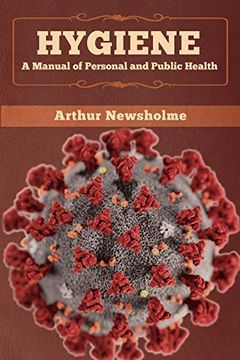Synopsis "Hygiene: A Manual of Personal and Public Health"
Sir Arthur Newsholme KCB FRCP (10 February 1857 - 17 May 1943) was a leading British public health expert during the Victorian era. He was born at Haworth and died at Worthing. He recalled talking with people who had known the Brontes. He was educated in Haworth and Keighley; entered St Thomas' Hospital, London, 1875. Newsholme strongly advocated improvement of public health by state intervention, such as national health insurance, sanitary measurement, hospitals and sanatoriums for the isolation of persons with contagious disease. Some of these proposals for public health interventions were described in a seminal paper in 1919, with the following abstract: "There is much illness that might have been avoided if there had been an organized system of state medicine," says Sir Arthur Newsholme, speaking of England. He would give a freer hand to the health officer who measures up to the standard. England's chief defect lies in the existence of small and inefficient local health bodies.Newsholme lived through a time wherein England, and many other countries in the western world, saw a demographic transition characterized by an exponential growth of the population since halfway the nineteenth century, which he explained both by a rise in fertility and mortality since the early nineteenth century, followed by a decline of mortality since halfway the nineteenth century followed by a decline in fertility after 1875. In his 1911 book on The Declining Birth-Rate he ascertained: 'There is no reasonable doubt that the decline in the birth-rate, which is one of the most striking features of the last thirty years, has been principally caused by volitional regulation of the size of the family.'He realized that the decline in the birth-rate was both be seen as a threat and an advantage: 'The population question, in particular, is one in which thoughtful men have alternatively been racked by fears of depopulation or, at least, stagnation of population and of the excessive growth of population.'Although a decrease in birth-rate could (and would) eventually results in a stagnation of population growth, and although the reasons to volitionally regulate the size of the family may sometimes have been 'selfish', the effect will eventually be beneficial to the development and prosperity of the population. Time proved that he was right: 'It would not be fair to omit from consideration what is probably one of the chief factors tending to restrict families. This is the desire of parents with small incomes to educate their children more satisfactorily than they themselves were educated, and to give their children the means for rising in the social scale.' (wikipedia.org)

